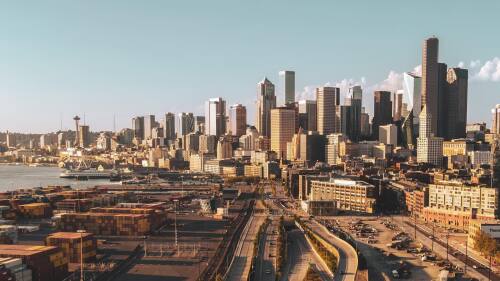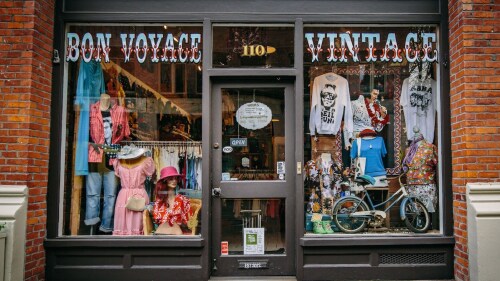Beneath Pioneer Square’s well-trodden streets is a different set of walkways, ones unused by Seattlites living their daily lives. There they sit, empty and desolate, apart from the occasional Tripadvisor-recommend tour or two.
But it wasn’t always that way. Back in the 1800s, these were normal, ground-level sidewalks bustling with banks, shops, offices, and businesses. Now, they’re known as the Seattle Underground.
How did these once-bustling sidewalks become empty, underground pathways? It all started with an accidental fire in 1889...
How does a fire lead to underground paths?
While the Great Seattle Fire of 1889 didn’t necessitate leaving sidewalks unused and underground, it did necessitate rebuilding parts of the city.
Just a few days after the fire, then-Mayor Robert Moran hosted a public meeting to discuss that necessary rebuilding. During the meeting, several locals suggested widening and raising Front Street (now First Avenue) and other streets north of Yesler Avenue (now Yesler Way).
But the sidewalks weren’t hurt by the fire, at least not seriously, so why did the city want to take on this project?
The city and its citizens hoped that by raising the street level — in some cases, by up to 22 feet — Seattle could improve its drainage system that often backed up during high tides. Since they were on the topic of rebuilding, Seattleites seemed to say, “Why not?”
So, the city built walls on either side of the old streets and paved over them to create new roads.
But Seattle Underground wasn’t born with this rise of the streets — not yet, at least. In fact, several of the post-fire, newly-built buildings had their entrances located on these original sidewalks, which were now below street-level but not yet covered up or fully underground. At the time, many of the businesses had ladders or stairs to access the entrances.
Eventually, sidewalks were added in line with the new streets, putting the old ones fully underground and making them much more difficult to access. It was the early 1900s when Seattle officially sealed access to these underground tunnels, only to be reopened at certain spots in the mid-1960s for tours that still run today.
Signs of the past
Now, you can still catch glimpses of the past — and you don’t always have to go on a tour to check them out.
Head to the cocktail bar at The Rabbit Box in Pike Place Market to stand on the same ground Seattlites used to before 1889. Located underneath the sidewalk on First Avenue, you might even catch a glimpse of pedestrians walking over some of its glass tiles.
If you do venture beneath the streets on a tour, here’s what to expect: decaying signs — like that of the old “Northern Hotel” — an old bank tellers cage, aged window frames, and uneven flooring. Some locals on sites like Reddit conjecture that these old signs, and other parts of the pathways, are fabricated for the tour.
What not to expect? As much as we love the features, the depictions of Seattle Underground in 1973 film “The Night Strangler” and the “Scooby Doo” episode ‘A Frightened Hound Meets Demons Underground’ aren’t entirely accurate.
And while Seattle Underground wasn’t mentioned outright in the film, we’ll leave you with this spine-chilling food for thought: The whole idea of of underground sidewalks reminds us an awful lot of scenes from “Us.” Sorry.











